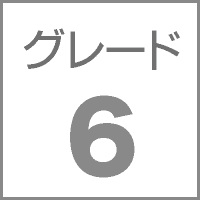
原題: Invocacion ( Revisitando El Puerto ) / Luis Serrano Alarcon →光ヶ丘女子高校が2019全国大会で演奏!スペインの作曲家アラルコンの渾身の1曲!
♪詳細情報♪
作曲:ルイス・セラーノ・アラルコン(Luis Serrano Alarcón)
演奏時間:11分00秒(約)
グレード:6
主なソロパート:Cajon. /Bsn. or Tuba /Euph. /Fl. /Ob. /E♭Cl. /Picc. /Bsn. /Eng.hrn. /A.Sax. /Hrn. /Piano /Cl. /Trp. /Trb. /Picc.trp.
Trp.最高音:1st:high H / 2nd:high H / 3rd:A / 4th:A
編成:吹奏楽
演奏時間:11分00秒(約)
グレード:6
主なソロパート:Cajon. /Bsn. or Tuba /Euph. /Fl. /Ob. /E♭Cl. /Picc. /Bsn. /Eng.hrn. /A.Sax. /Hrn. /Piano /Cl. /Trp. /Trb. /Picc.trp.
Trp.最高音:1st:high H / 2nd:high H / 3rd:A / 4th:A
編成:吹奏楽
▼楽器編成▼
1st Piccolo
1st Flute
2nd Flute (2nd Piccolo)
3rd Flute (3rd Piccolo)
Oboe 1
Oboe 2
English Horn
1st Bassoon
2nd Bassoon
Contrabassoon
Eb Clarinet
1st Clarinet in Bb
2nd Clarinet in Bb
3rd Clarinet in Bb
Bass Clarinet
1st Alto Saxophone
(doub. Soprano Saxophone in B♭)
2nd Alto Saxophone
Tenor Saxophone
Baritone Saxophone
1st Flute
2nd Flute (2nd Piccolo)
3rd Flute (3rd Piccolo)
Oboe 1
Oboe 2
English Horn
1st Bassoon
2nd Bassoon
Contrabassoon
Eb Clarinet
1st Clarinet in Bb
2nd Clarinet in Bb
3rd Clarinet in Bb
Bass Clarinet
1st Alto Saxophone
(doub. Soprano Saxophone in B♭)
2nd Alto Saxophone
Tenor Saxophone
Baritone Saxophone
1st Horn in F
2nd Horn in F
3rd Horn in F
4th Horn in F
1st Trumpet in Bb
(doub. Piccolo Trumpet)
2nd Trumpet in Bb
3rd Trumpet in Bb
4th Trumpet in Bb
1st Trombone
2nd Trombone
3rd Trombone
Bass Trombone
1st Euphonium
2nd Euphonium
1st Tuba
2nd Tuba
Double Bass
Piano
2nd Horn in F
3rd Horn in F
4th Horn in F
1st Trumpet in Bb
(doub. Piccolo Trumpet)
2nd Trumpet in Bb
3rd Trumpet in Bb
4th Trumpet in Bb
1st Trombone
2nd Trombone
3rd Trombone
Bass Trombone
1st Euphonium
2nd Euphonium
1st Tuba
2nd Tuba
Double Bass
Piano
Timpani
1st Percussion
1st Percussion
Cajón Flamenco
Tubular Bells
2nd PercussionTubular Bells
Ride Cymbal
Suspended Cymbal
Palmas (Hand Claps)
3rd PercussionSuspended Cymbal
Palmas (Hand Claps)
Bass Conga
Bass Drum
Tam-tam
4th PercussionBass Drum
Tam-tam
Cymbals
Triangle
Palmas (Hand Claps)
5th PercussionTriangle
Palmas (Hand Claps)
Vibraphone
Tambourine
Palmas (Hand Claps)
6th PercussionTambourine
Palmas (Hand Claps)
Xylophone
Glockenspiel
Palmas (Hand Claps)
Glockenspiel
Palmas (Hand Claps)
♪楽曲解説♪
この作品は既存の曲を変化することを目的に生まれました。ピアニストでもある作曲者が若いころに演奏したことのある、イサーク・アルベニスの組曲イベリアの2曲目のピアノ曲「エル・プエルト(港)」を元にしています。作曲家という視点でこの作品に再び向き合うことは、一方では自身の経験と思い出の影響が垣間見え、一方では彼が意識して、彼自身の音楽の進化と成熟度を評価するという挑戦でもあります。
言葉遊びとして、「インヴォカシオン(Invocacion)」というタイトルは、エヴォカシオン(Evocacion)という言葉に似ていながら、意味は対照的です(エヴォカシオンは組曲イベリアの最初の曲のタイトルです)。 喚起(evoking)とは、突然思い起こすこと、または外部の何かによって刺激されることを意味しますが、祈り(invoking)はリクエスト、つまり意思を意味します。 だから、アルベニスの原曲(グアヒーラの軽さで支えられている)をより速いテンポとよりリズミカルなキャラクターに変換し、 儀式舞曲の個性により近づけているのです。














